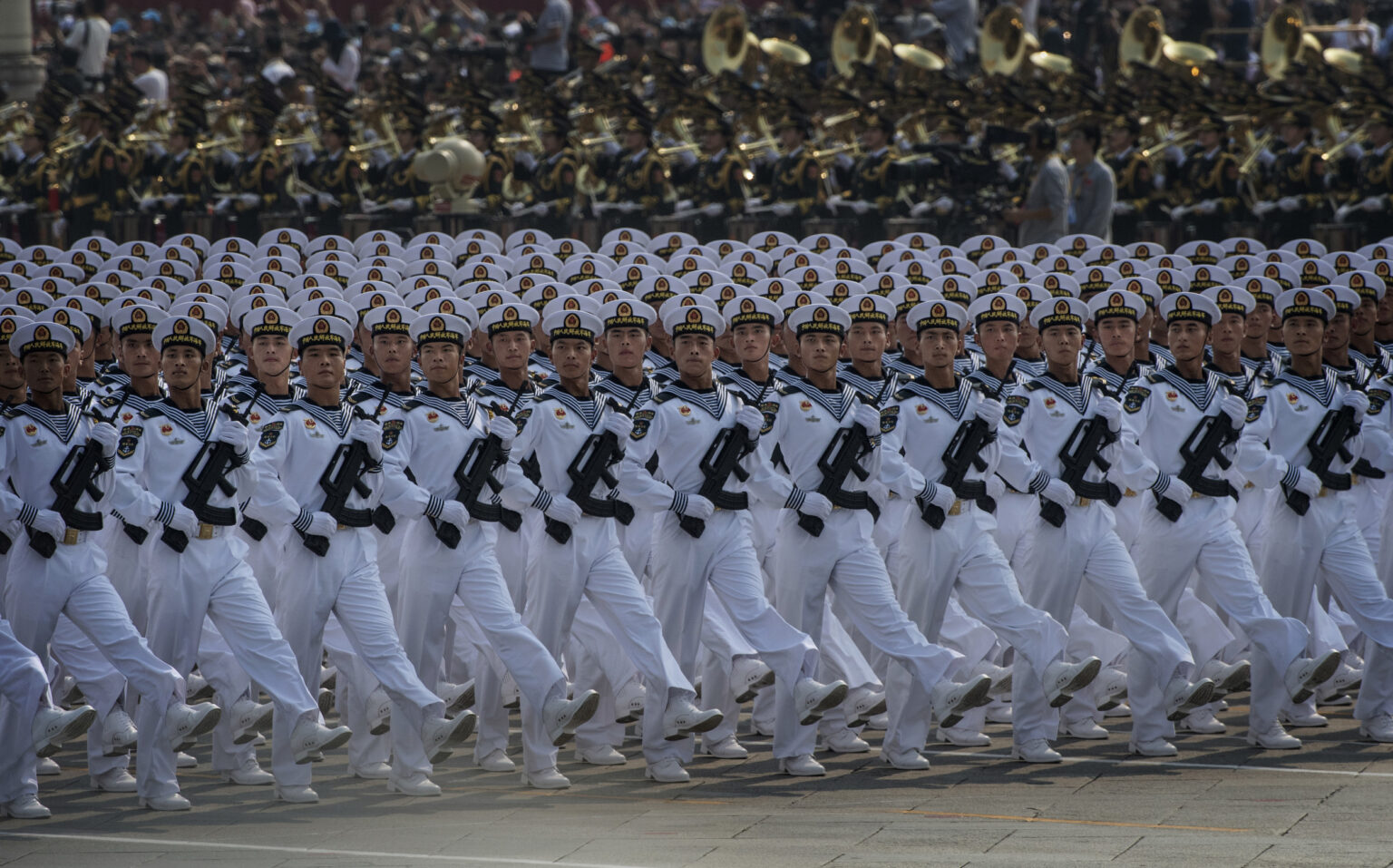Experts have told Newsweek that China has the intent and capability to become a “world-class military” and enjoy conventional superiority in the Indo-Pacific region as it expands and modernizes its naval force massively, which ranks at the top historically in this regard.
The Chinese military did not immediately respond to Newsweek‘s request for comment.
Why It Matters
Last month, the United States Defense Department released its annual report on Chinese military power, which stated China, the “pacing challenge” for the U.S. military, continued its efforts to form the military into an increasingly capable instrument of national power.
With regard to its naval development, the report said the Chinese navy remains the largest in the world by hull count, with over 370 ships and submarines in service. Meanwhile, the country has over 600 nuclear warheads.
In response to the report, the Chinese Defense Ministry said the country “adheres to the path of peaceful development and a national defense policy that is defensive in nature.”
What To Know
China is undergoing significant military modernization, Kitsch Liao, associate director of the Atlantic Council’s Global China Hub, told Newsweek. But the scale of the buildup is of less relevance than the intent, and whether it can achieve such intent, he believes.
“By all accounts, China is fully capable of achieving its goal of ‘basically completing’ its military modernization by 2035, and have a ‘world-class military’ before 2049,” he said.
Regarding its naval power, Liao said China has sufficient industrial capacity to replace the losses or obsolescence at a rapid rate. It is also increasingly unlikely to uphold its nuclear no-first-use policy under all conditions and may resort to nuclear blackmail, he warned.
“It has taken effectively 20 years to transform the [Chinese] fleet from a primarily green water-focused coastal defense force with a limited number of larger combatants into a true blue water fleet,” Alex Luck, an Australia-based naval analyst, told Newsweek.
The closest historical analog would be the massive expansion of the Soviet navy from the 1960s to the 1980s, Luck added, which saw the induction of multiple helicopter carriers and aircraft carriers supported by around 150 new blue water-capable warships.
A “green water” navy is smaller and serves a single purpose, operating ships in coastal and littoral environments. A “blue water” navy possesses a large, multipurpose, expensive, and heavily manned fleet for conducting operations globally, across the deep waters of oceans.
The Chinese navy is gradually extending its operational reach beyond East Asia into a sustained ability to operate at increasingly longer ranges, the Pentagon said in its report.
China is one of the nine nations armed with nuclear weapons. Beijing has declared that it “will never at any time or under any circumstances be the first to use nuclear weapons,” a policy that is questioned by Washington due to its “rapid and opaque” nuclear build-up.
The Pentagon’s report assessed that Beijing probably would consider nuclear first use if a conventional military defeat in Taiwan gravely threatened the survival of its communist regime. China has refused to renounce using force against Taiwan, a self-ruled island.
However, Liao cautioned that a dangerous incentive structure is created for China and future leaders beyond Xi Jinping, who is in his unprecedented third term as the leader. “Does China have ambitions beyond its long-stated goal of ‘unification’ with Taiwan?” he questioned.
What People Are Saying
Kitsch Liao told Newsweek: “Only a strong U.S.-led alliance in the region, with sufficient awareness and resolve to deter any ambitions stemming from this dangerous combination of China’s potential willingness for nuclear blackmail, and conventional military power, can prevent the Indo-Pacific region from descending into war.”
Alex Luck told Newsweek: “The only element [in China’s modernization and enlargement of its navy] absent so far is rapid growth for the nuclear-powered submarine fleet, although we start to see signs of significant change there now as well.”
What Happens Next
It remains to be seen whether China will accelerate military modernization and expand the scale of military buildup as the Pentagon views the Indo-Pacific as its priority theater.
Read the full article here


